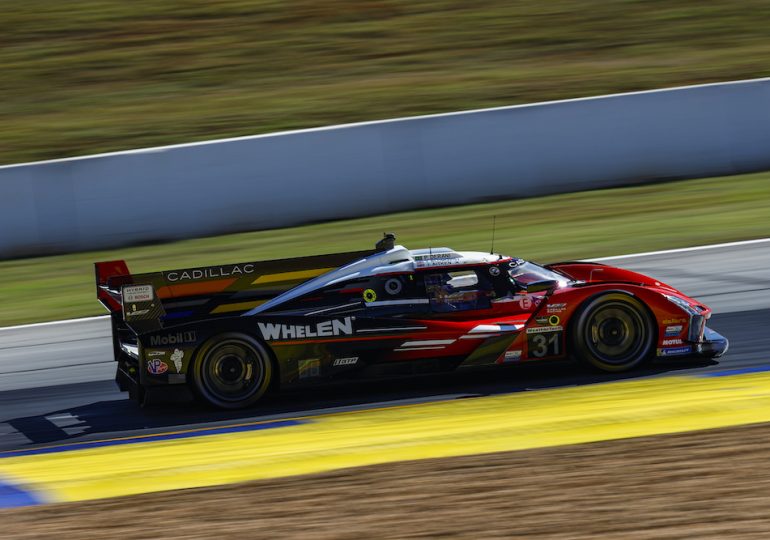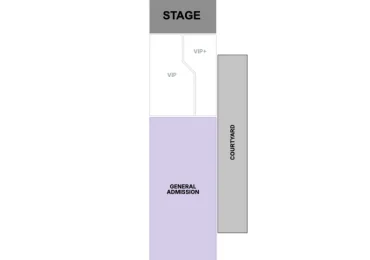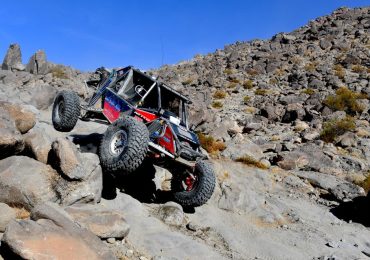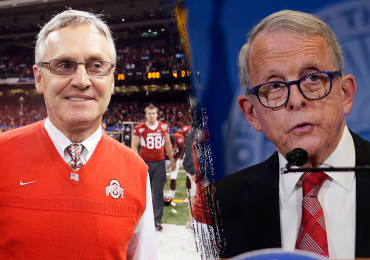Motorsport is a hotbed of new technology, which is essential to its existence, but sometimes, don’t you just wish an unhinged group of fanatics would develop something that reminds you why you love racing?
So much of modern motorsport is governed by parity, and many series choose to do that by keeping regulations for things like engines the same. You can often build your own, but to a certain capacity and stringent, suffocating regulations mean everything merges into a variation of the same thing.
It’s at this moment I’m transported back to the 12 Hours of Sebring last year, standing with my tour guide, RACER’s Marshall Pruett, that I saw, and more importantly, heard, that unhinged thing we so seldom, but desperately want, to see.
Cadillac’s V-Series.R sounds like it is being fueled by the asphalt it is driving on, powered by ghouls, scorpions, children’s nightmares, that sort of thing. It’s a deep growl which rasps and bellows through its seven gears.
If you haven’t heard the marque’s IMSA and World Endurance Championship challenger, watch/listen to this.
It’s no surprise that, given Cadillac’s first proper foray into sports car racing in 1950 produced the legendary “Le Monstre” — with a 5.4-liter V8 — and its second, the 4.0-liter, V8 turbocharged Northstar LMP of 2000, that the brand has produced yet another raucous machine.
But there’s plenty more to this one that makes it a paradox of the old and new, a reflection of the excellent IMSA rules cycle and proof that motorsport doesn’t need to be formulaic and homologous, if the rule makers broaden their horizons.
The noise is something Cadillac’s lead propulsion engineer Adam Trojanek tells RACER it knew it wanted from the start; that its new car should “sound great, bring that American thunder not only to IMSA, but the WEC paddock and all over the world, and really make sure that everyone knew that it was a Cadillac going around the track”.
The 32-valve, 5.5-liter V8, which produces around 670hp, was designed from the beginning to sound incredible as well as perform to the highest level.
The four-into-one exhaust, and utilizing many key personnel who had engineering knowledge of how parts of engine production impact acoustics, was obviously very important. Monitoring the sound on the dyno was also crucial during the development phase.
Sound isn’t always a staple of the development process for many manufacturers but it’s clearly very important to Cadillac. If you want any evidence of that, Trojanek tells a story of something that happened in the car’s development, when blending the hybrid power unit — which the current IMSA cars start on in the pits, and then the engine kicks in later on.
“We looked at how we utilize the different powertrain components down pit lane,” Trojanek explains. “We found something that’s maybe a little better for fuel. We’re like, nah, the original one sounds better! We’re just gonna run and make it sound better down pit road, because that is the part that makes the car! So yeah, definitely try to keep the ‘let’s make this thing sound great’ when we can.”
Trojanek also recalls the first time Cadillac shook down the V-Series.R, at Indianapolis in 2022, and it was just after July 4.
“Being an American, American team, it was pretty ironic with the timing of things,” he said. “The first time we went on track, it was amazing. The social media presence from that and then further testing just showed how enamored people are, and continue to be, with the Cadillac sound.”
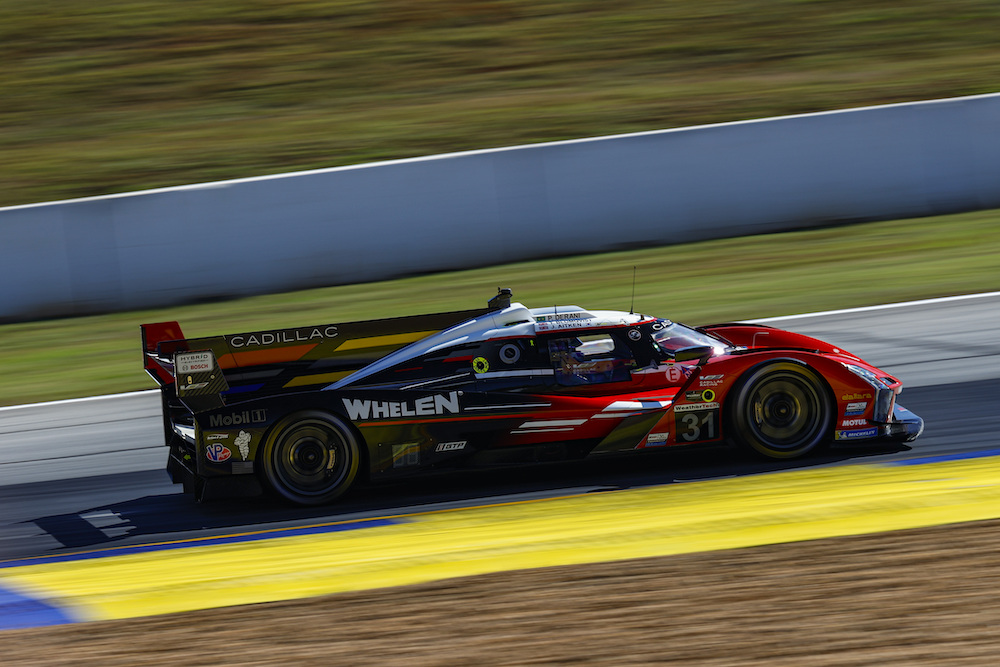 The Cadillac’s signature growl was engineered into the engine’s design. Jake Galstad/Motorsport Images
The Cadillac’s signature growl was engineered into the engine’s design. Jake Galstad/Motorsport Images
It wasn’t a foregone conclusion it would go naturally aspirated — remember the Northstar LMP was a turbocharged V8 — but doing so when all of its competitors are running a smaller displacement, turbocharged engine (Acura’s is a 2.4-liter, less than half the size of the Cadillac!) opened the realms of possibility.
Turbo lag isn’t as much of a problem, such is the development of turbo technology these days, but nevertheless, the Cadillac doesn’t have that worry and provides supple driver-feel for the engine’s power delivery. Perhaps the most beneficial thing though is — and you may well have heard and grown to hate this word as I have — the “packaging” is much less of a problem. With turbos, battery packs and cooling, packaging all of this stuff into the car and having it perform reliably has been an issue.
But with just a naturally aspirated engine, Trojanek reckons Cadillac had to do less work than their rivals in this area and dedicate important time elsewhere. Design, making components more lightweight, developing materials, manufacturing processes and production line checking, things like this, to find gains in other areas.
It’s true that because of the balance of performance which regulates and keeps sportscars equal, you can only produce and use so much power, and software has become the big, key battleground in IMSA versus any one of the “hardware” parts like the engine.
But IMSA is a series of marginal gains and just because power is limited, there’s still a need to focus on how that power is delivered. There are almost 2000 parts in the LMC55R engine, so there’s plenty to hone and work on and make it reliable, too. Over a 24-hour event, including the sessions prior to the race, IMSA cars might cover the distance from Seattle to New York and more.
With such tough opposition, it’s vital to ensure reliability and speed.
The paradox is, although this is what some people would call an extremely nostalgic engine, the IMSA rule set means that it’s mated to a hybrid unit. The “old” and the new, showing that motorsport can do just that and blend different eras of technology in order to make sure it’s relevant to its manufacturers, just like it does with things like letting the car makers use headlights you would see on a road car.
As well as the hybrid, Cadillac reckons 30 percent of the parts used in the car are 3D printed. So while this engine might be nostalgic on paper, the package is undeniably modern, cutting-edge.
While the engine stays the same in 2025, it’s a period of change this year for Cadillac. With Chip Ganassi exiting the fold and Wayne Taylor Racing replacing it, there’s a new team and a driver shake-up which could provide some initial teething issues, but also provide a fresh level of input and insight from new people, at a time when the hardware remains the same.
The noise will also sound the same, and I urge you to try and get trackside to an IMSA race this year. Especially one at night, if you can. It’s one of the best noises in modern motorsport.
It will have actual competition this year when the even bigger Aston Martin engine gets select outings truly delivering on IMSA’s “bring the noise” ethos – the series has even asked to make the Aston Martin louder!
These engines give you faith that motorsport doesn’t have to become soulless. There’s still plenty of life left in making motorsport loud and relevant at the same time.
For more detail on the Cadillac LMC55R engine, click here or watch below.
For a tech tour of the Cadillac V-Series.R, click here or check out the video below.
This has been my first column for RACER. It’s truly an honor to write for the biggest and best motorsport media brand in North America, a publication I’ve read and a website I’ve perused for many years, and I’m grateful for the opportunity. Its team of writers have always been so welcoming to me in the paddock, and I hope to emulate them in bringing you great content from IMSA throughout the year.

